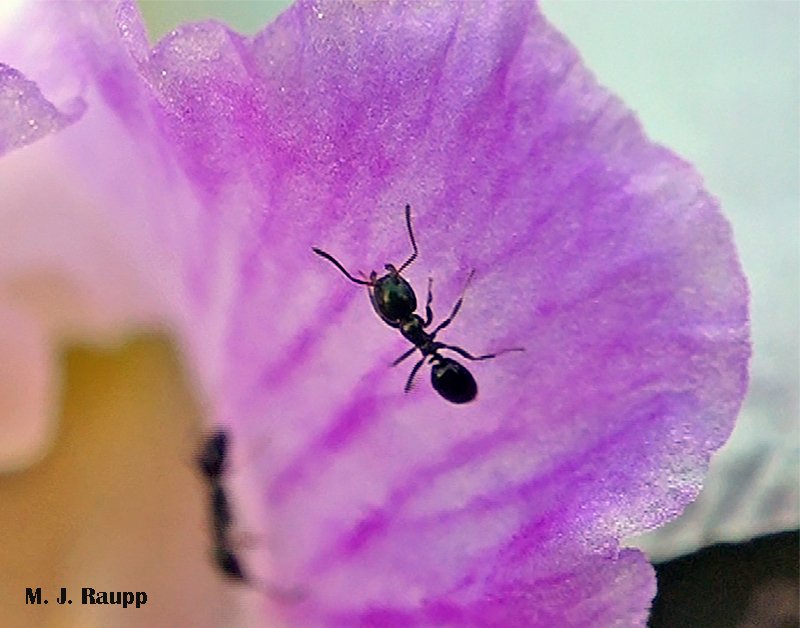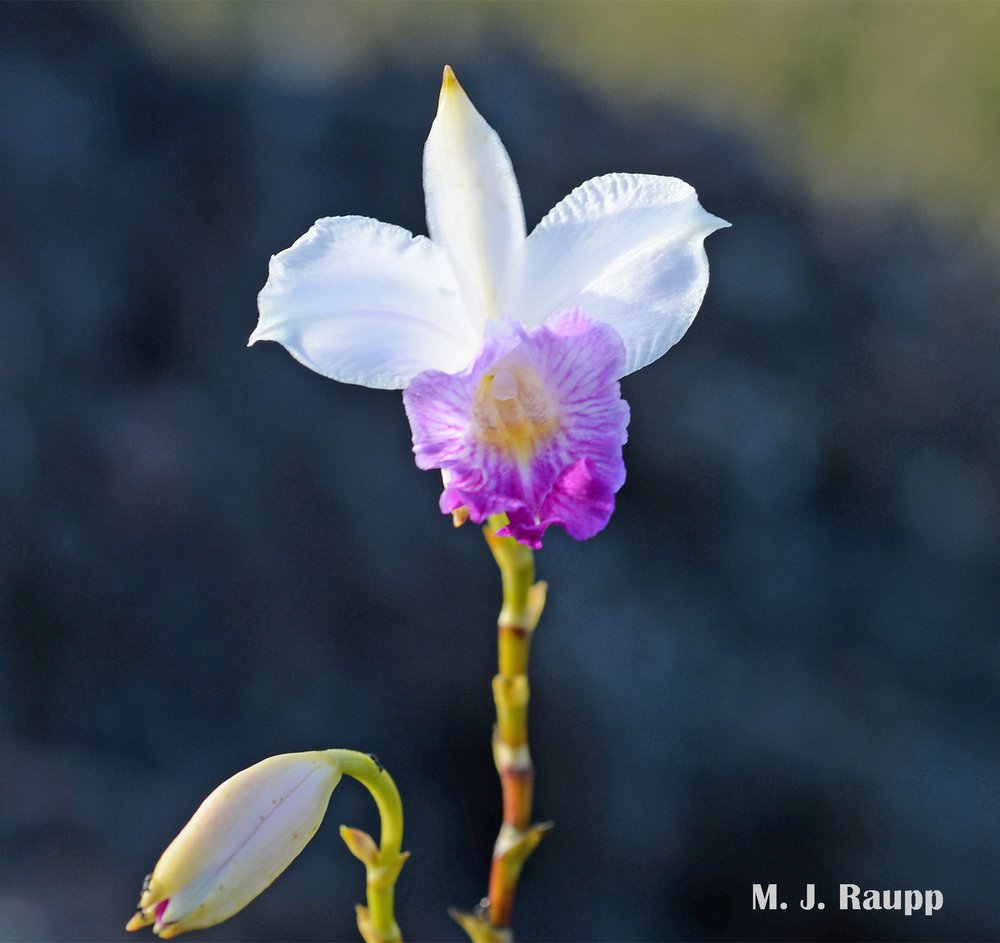
Non-native bamboo orchids and ants are early colonists to newly formed volcanic soils in Hawai’i.

Native to several countries in Asia, beautiful bamboo orchids are now found on continents and islands around the globe.
In last week’s visit to Hawai’i we met one of many species of small sucking insects known as psyllids that have evolved along with their iconic native host plant, the ʻŌhiʻa tree, one of the first colonists of lava flows. This week we return to the Kilauea volcano on the big island to meet two non-native invaders to these remote islands. Recall that this chain of land masses formed as the earth’s crust passed over a volcanic hot spot beneath the Pacific Ocean over the course of some five million years. Flora and fauna extant on this archipelago are comprised of descendants of ancient colonists or more recent travelers that arrived from elsewhere with or without assistance from humans. The stark beauty of the lava flow on Kilauea’s Iki trail is punctuated not only by the indigenous ʻŌhiʻa, but also by a drop-dead gorgeous orchid known as the bamboo orchid, Arundina graminifolia. Bamboo orchids are native to tropical biomes in several Asian countries but have been introduced to countries in Central America, the Caribbean, and several Pacific islands, including Hawai’i where they readily colonize newly formed volcanic soils. Plants are not alone in their abilities to colonize new lands. Insects are also renowned for their peripatetic abilities and amongst the best of these travelers are ants, anointed by famed entomologist and sociobiologist E. O. Wilson as the “little things that run the world.” Ants created quite a stir in the media earlier this year when scientists released their findings that we share our planet with some 20,000,000,000,000,000 members of this six-legged clan. Ants are found on every continent on earth except Antarctica, which seems strange as this continent is the only one with “ant” in its name (LOL). Several islands also lack ants, but not so for the Hawaiian Islands where more than 60 species of ants have been introduced over the last few centuries with an assist from humans, as imported plants and products arrived on the islands.
The lava lake on the floor of erupting Kilauea Volcano creates new land. Among the first plants to colonize a recent lava flow is the beautiful non-native bamboo orchid. Not surprisingly, an unidentified species of ant is one pioneer to make this newly formed land its home, where it searches orchid blossoms for sustenance.
While always on the lookout for bugs and their relatives, it was no surprise to find the non-native bamboo orchid colonized by one of the many non-native ants busily exploring its blossoms, apparently in search of a plant product like nectar or perhaps honeydew-producing insects like aphids. Described as “ecosystem engineers”, ants play vital roles in global ecosystems providing services such as seed dispersal for plants, biological control of crop pests, aeration of soil, linking trophic levels of food webs, and decomposition of organic matter. However, recent invasions of pestiferous “tramp ants” to Hawai’i, including little and tropical fire ants, pose threats to humans and pets by virtue of their memorable sting. These and invasive yellow crazy ants attack and kill other arthropods, including native and non-native invertebrates like spiders, crabs, and insects, and also small vertebrates, including birds, reptiles, amphibians, and mammals. They may also defend colonies of sap-sucking insects like aphids that damage ornamental plants and crops. A small dedicated band of scientists at the Hawai’i Ant Lab are tracking the spread of invasive ants. Their mission is to protect Hawai’i from new ant invasions, prevent the spread of established invasive ants, eradicate new infestations, and help homeowners, resource managers, and businesses to find new ways to manage the ongoing influx of these emerging pests. Don’t know if the tiny ants attending bamboo orchids are a boon or a bane to Hawai’i’s’ ecosystems, but they, along with these orchids are one of the first insect colonists to gain a foothold on new land.
Acknowledgements
Bug of the Week thanks the ranger crew at Volcano National Park for suggesting locations to enjoy the spectacular natural beauty of the geology and biology found in the park. Enlightening discussions with Drs. Dan Gruner and Paula Shrewsbury helped shape this episode. Thr wonderful articles “The Little Things That Run the World (The Importance and Conservation of Invertebrates)” by Edward O. Wilson and “The abundance, biomass, and distribution of ants on Earth” by Patrick Schultheiss, Sabine S. Nooten, Runxi Wang, and Benoit Guénard, were consulted for content presented herein.
To learn more about invasive ants in Hawai’i, please visit this website: https://littlefireants.com/
No comments:
Post a Comment